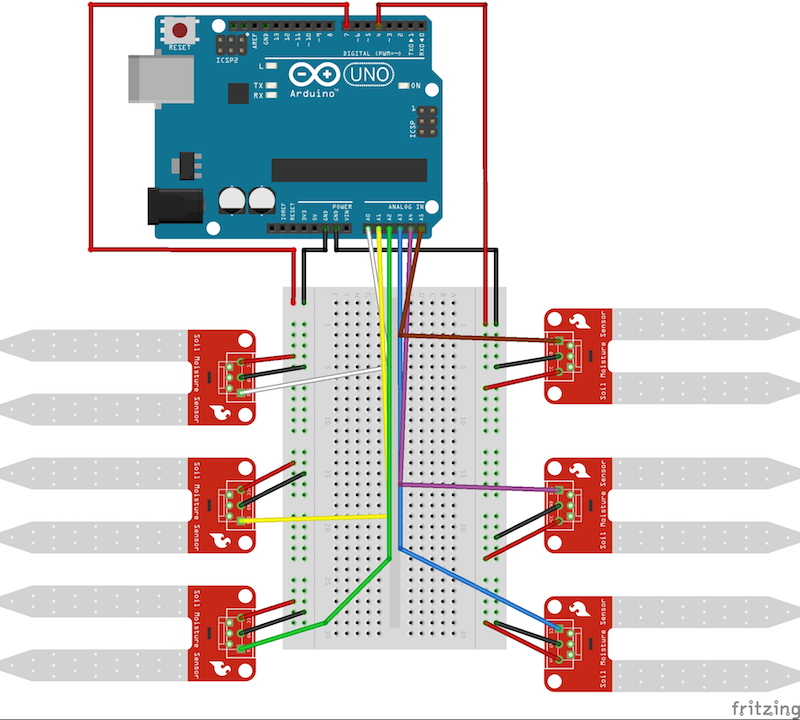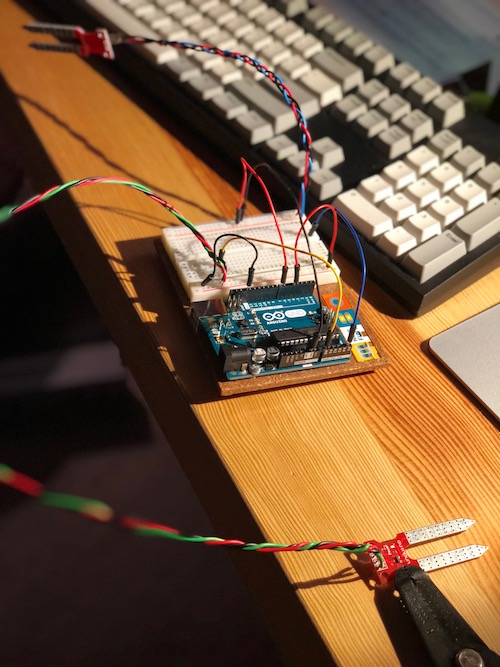Orchid Minder Hardware v0
The first version of the hardware consists of an Arduio Uno and two moisture sensors. The v1 of the system is depected with this fritzing layout

but as a version-less-than-zero we’re starting with just two sensors. You will note that the current setup doesn’t have the bluetooth nor does it have the ambient temperature and humidity sensors. Baby steps.
The Arduio Uno that we’re using has six analog inputs, so the first version of the hardware device will connect to six moisture sensors. Thankfully, I have more than six plants to monitor (mother-in-law gives one orchid per year as a gift; I’ve been married for 20+ years; if I only had six alive, that would be bad). We will need to add a multiplexer in a future generation to let us use more than six sensors. But for now, the Arduio, has six analog pins, so we will start with six sensors.
The basic design is such that we will use digital pins 4 and 7 to supply power to the sensors when we want to take a reading. I have read that letting the Arduino provide constant power to the sensor will cause them to fail prematurely. So, we will only supply power when we want to take a reading. This is why we supply power through the 4 and 7 pin instead of just from one of the 5V pins.
The hardware system will come to life at some interval, supplying 5v to each of the sensors so that they can generate a reading. Then it will wait a few miliseconds to let things stabalize. Finally it will take and record a reading from each of the attached sensors and turn the power to the sensors off until the next reading.
The basic setup with two sensors looks like this. Next post: soldering and sourcing the sensors.

